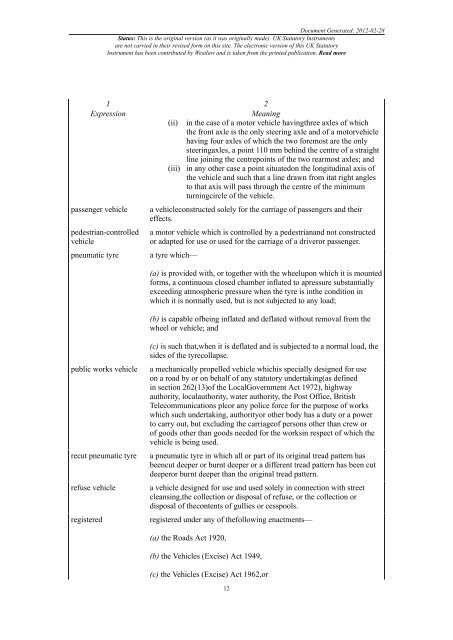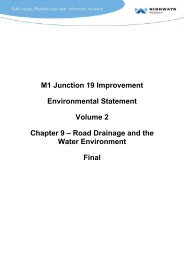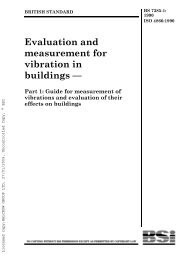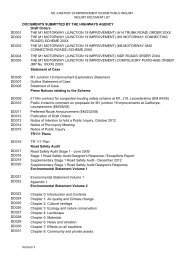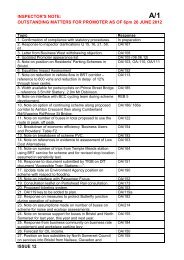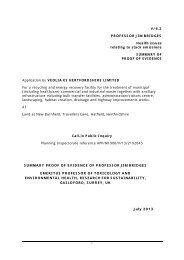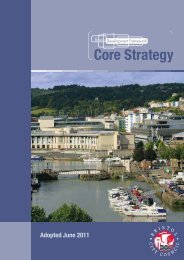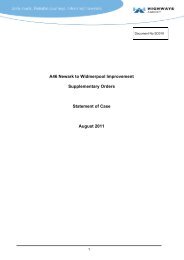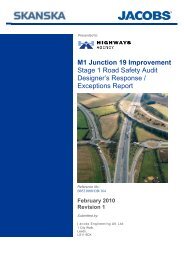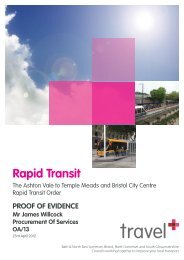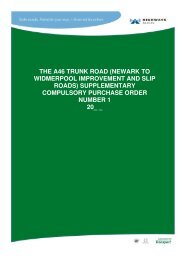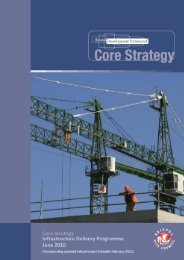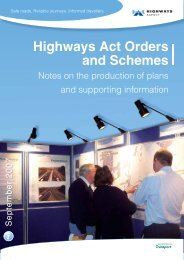The Road Vehicles (Construction and Use) Regulations 1986
The Road Vehicles (Construction and Use) Regulations 1986
The Road Vehicles (Construction and Use) Regulations 1986
Create successful ePaper yourself
Turn your PDF publications into a flip-book with our unique Google optimized e-Paper software.
Document Generated: 2012-02-28<br />
Status: This is the original version (as it was originally made). UK Statutory Instruments<br />
are not carried in their revised form on this site. <strong>The</strong> electronic version of this UK Statutory<br />
Instrument has been contributed by Westlaw <strong>and</strong> is taken from the printed publication. Read more<br />
1 2<br />
Expression<br />
Meaning<br />
(ii) in the case of a motor vehicle havingthree axles of which<br />
the front axle is the only steering axle <strong>and</strong> of a motorvehicle<br />
having four axles of which the two foremost are the only<br />
steeringaxles, a point 110 mm behind the centre of a straight<br />
line joining the centrepoints of the two rearmost axles; <strong>and</strong><br />
(iii) in any other case a point situatedon the longitudinal axis of<br />
the vehicle <strong>and</strong> such that a line drawn from itat right angles<br />
to that axis will pass through the centre of the minimum<br />
turningcircle of the vehicle.<br />
passenger vehicle<br />
pedestrian-controlled<br />
vehicle<br />
pneumatic tyre<br />
a vehicleconstructed solely for the carriage of passengers <strong>and</strong> their<br />
effects.<br />
a motor vehicle which is controlled by a pedestrian<strong>and</strong> not constructed<br />
or adapted for use or used for the carriage of a driveror passenger.<br />
a tyre which—<br />
(a) is provided with, or together with the wheelupon which it is mounted<br />
forms, a continuous closed chamber inflated to apressure substantially<br />
exceeding atmospheric pressure when the tyre is inthe condition in<br />
which it is normally used, but is not subjected to any load;<br />
(b) is capable ofbeing inflated <strong>and</strong> deflated without removal from the<br />
wheel or vehicle; <strong>and</strong><br />
public works vehicle<br />
recut pneumatic tyre<br />
refuse vehicle<br />
registered<br />
(c) is such that,when it is deflated <strong>and</strong> is subjected to a normal load, the<br />
sides of the tyrecollapse.<br />
a mechanically propelled vehicle whichis specially designed for use<br />
on a road by or on behalf of any statutory undertaking(as defined<br />
in section 262(13)of the LocalGovernment Act 1972), highway<br />
authority, localauthority, water authority, the Post Office, British<br />
Telecommunications plcor any police force for the purpose of works<br />
which such undertaking, authorityor other body has a duty or a power<br />
to carry out, but excluding the carriageof persons other than crew or<br />
of goods other than goods needed for the worksin respect of which the<br />
vehicle is being used.<br />
a pneumatic tyre in which all or part of its original tread pattern has<br />
beencut deeper or burnt deeper or a different tread pattern has been cut<br />
deeperor burnt deeper than the original tread pattern.<br />
a vehicle designed for use <strong>and</strong> used solely in connection with street<br />
cleansing,the collection or disposal of refuse, or the collection or<br />
disposal of thecontents of gullies or cesspools.<br />
registered under any of thefollowing enactments—<br />
(a) the <strong>Road</strong>s Act 1920,<br />
(b) the <strong>Vehicles</strong> (Excise) Act 1949,<br />
(c) the <strong>Vehicles</strong> (Excise) Act 1962,or<br />
12


